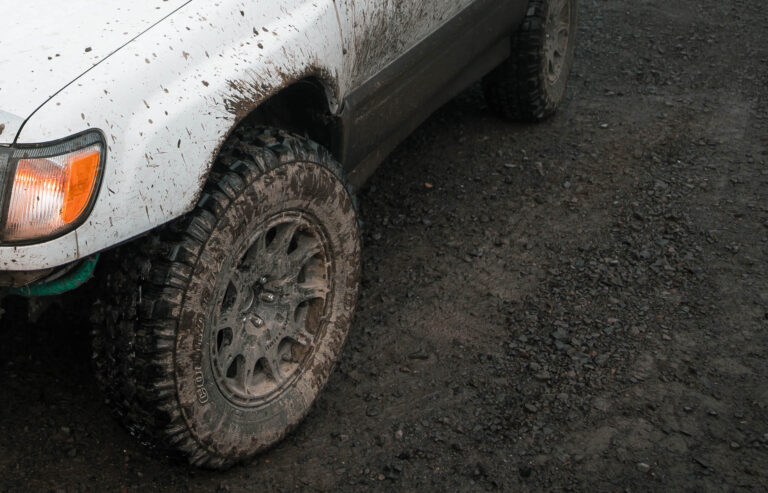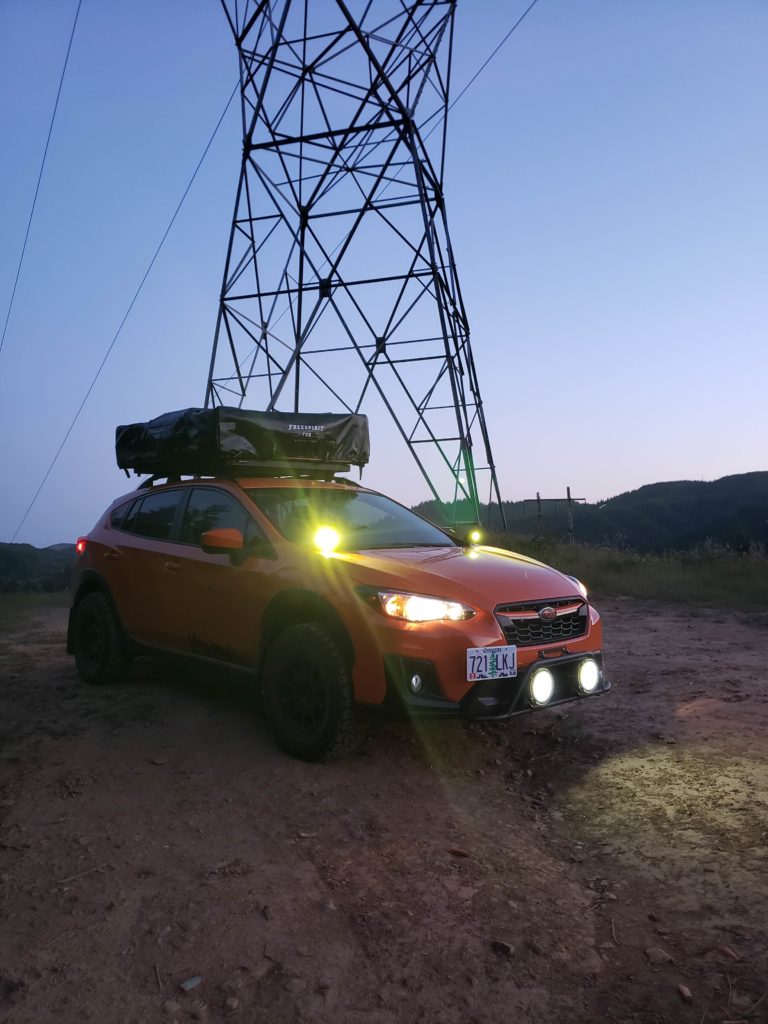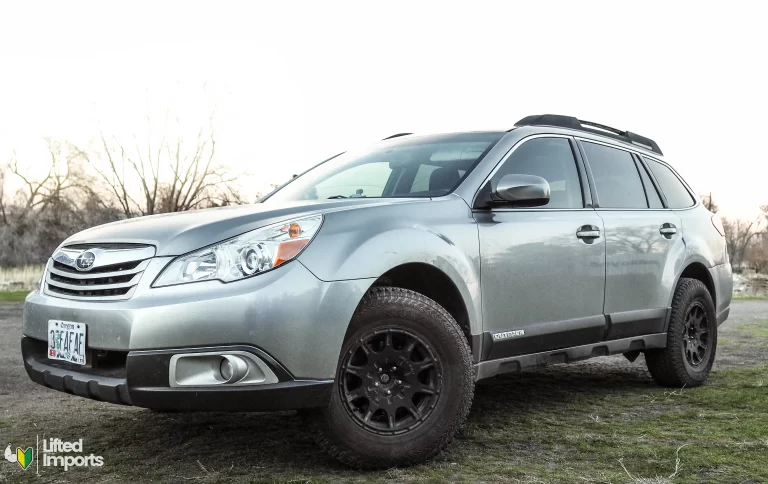
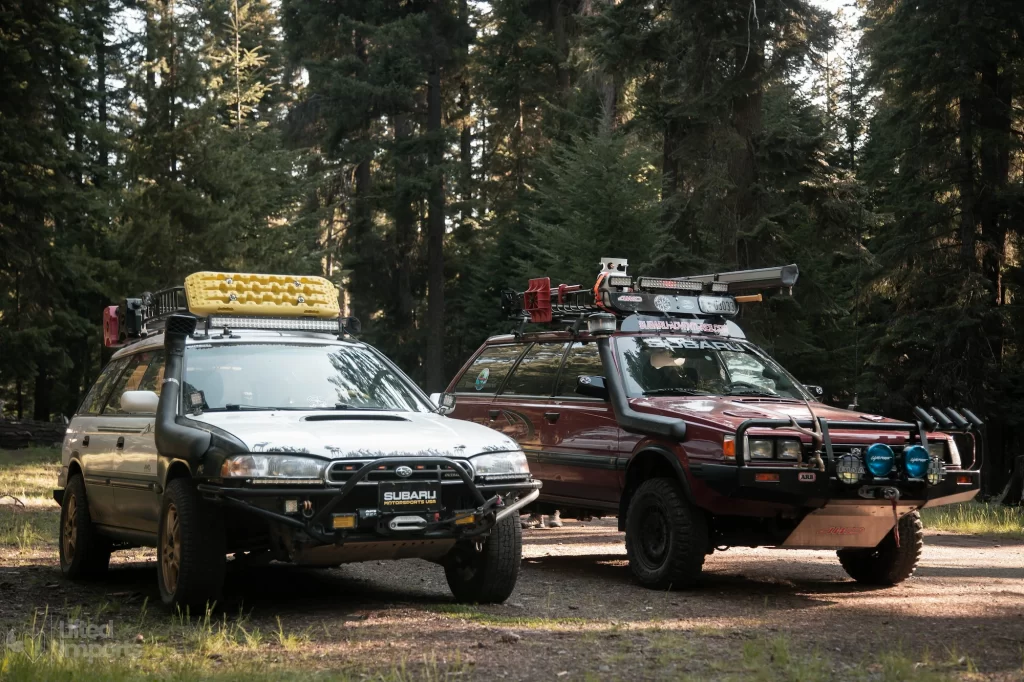
I want to break down a topic that comes up a lot in the Subaru off-road community: big lift kits. More specifically, should you install one and does it actually improve capability? I’ve gone back and forth on this myself, and after a lot of consideration, I decided that for my needs it just doesn’t make sense. So, let’s dive into the reasoning behind this decision and whether a big lift kit is actually worth it for your build.
Why People Install Lift Kits
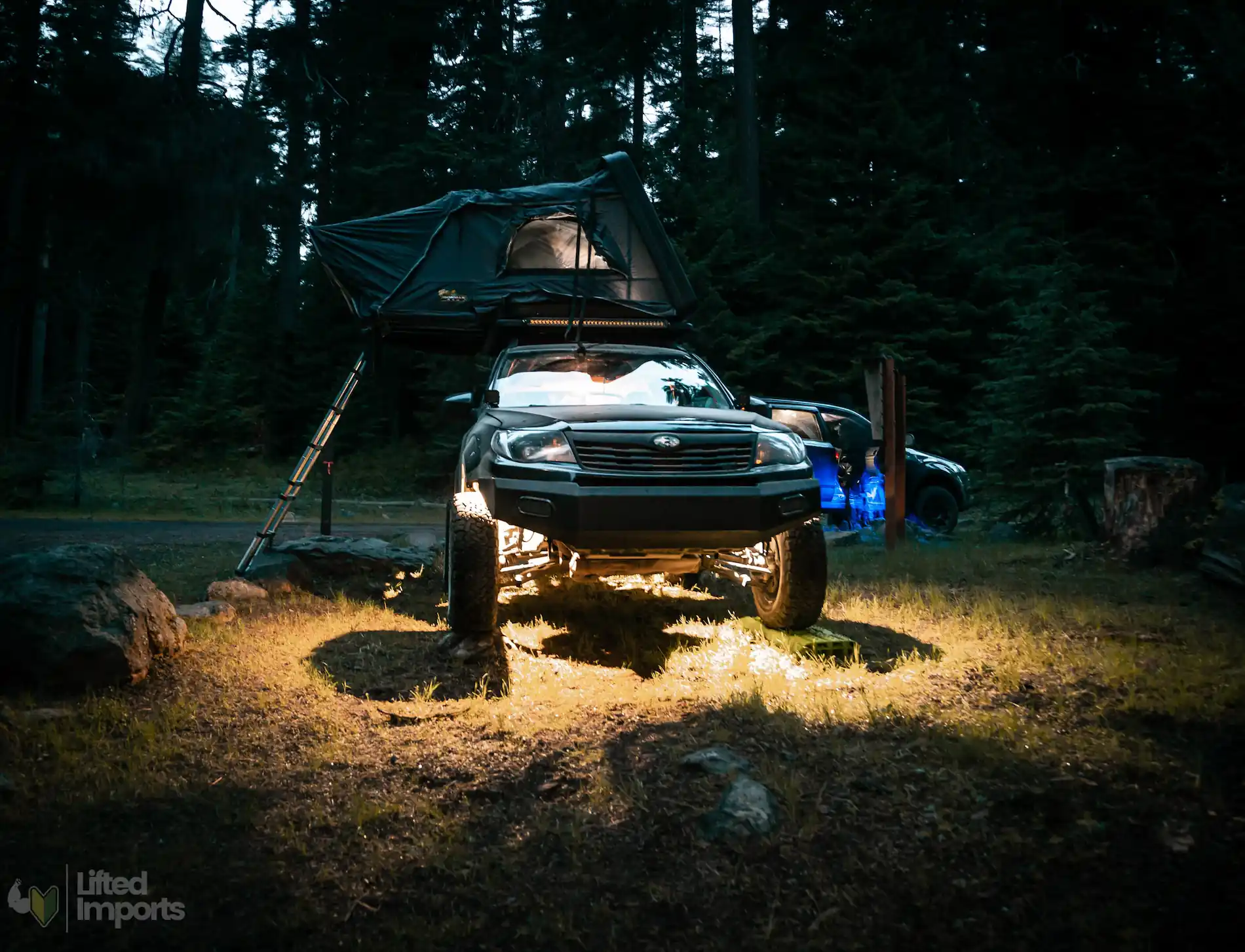
Aesthetic Preference
Some people just love the look of a big lift. And honestly, that’s totally fine. If you want a taller, more aggressive stance for your Subaru just because it looks cool, I support that and would never criticize it. Build your car in a way that makes you happy.
Functionality (Bigger Tire Fitment)
The more practical reason for a lift is to clear larger tires. This is especially common in traditional 4×4 vehicles where more tire means more capability. However, things work a little differently with Subarus, and that’s where the debate gets interesting. In fact, it took me awhile to realize this myself.
How Subaru Lift Kits Differ from Traditional 4x4s
Unlike body-on-frame trucks and SUVs, Subarus use a unibody construction with independent suspension. This means that when you lift a Subaru, you’re not gaining the same benefits as you would on a traditional 4×4 with a solid axle. Here’s why:
No Low Range Gearing
Most 4x4s have a transfer case with low-range gearing (4-Low), which allows for better crawling and torque at low speeds. Subarus don’t have this. Even dual-range transmission models (which weren’t available in the U.S.) don’t offer the same level of gearing reduction as something like a Jeep or Toyota.
Unlike most 4WD vehicles, Subarus can’t be easily re-geared. Traditional 4x4s have accessible ring and pinion setups that allow for quick swaps, making it easy to adjust gearing for larger tires. But in a Subaru, the front differential is housed inside the transmission itself—meaning you’d have to split the casing just to change the gears.
To make things even more challenging, the aftermarket for Subaru gearing is virtually nonexistent. A quick Google search for Jeep gears pulls up at least 3–4 reputable brands, while for Subarus, there’s almost nothing available. This lack of options makes it incredibly difficult to compensate for the added strain of oversized tires, further limiting how far you can push a big lift
Tire Size Limitations
Without a proper low-range, going too big on tires actually makes your Subaru harder to drive off-road. You need momentum to keep moving because your gearing can’t compensate for the larger diameter.
This means that beyond a certain point, lifting your Subaru higher won’t allow you to run significantly bigger tires without causing major drivability issues.

The Hidden Costs of a Big Lift Kit
A proper big lift (anything over 2 inches) involves a lot more than just taller struts and spacers. Here’s what you’ll need to consider:
Subframe Spacers
Since Subarus have independent suspension, lifting more than 2 inches means dropping the entire drivetrain (engine, transmission, rear diff) with subframe spacers. This adds complexity and weight while negating most of the ground clearance benefits. These comprehensive subframe spacer kits can start around $500 and go up from there.
Extended Components
Lifting this high requires modifications like extended brake lines, steering shaft extensions, radiator hoses, and pitch stop mounts.
A proper big lift can cost upwards of $1,200 (or more), and that’s before factoring in new tires, alignment, and potential drivetrain modifications/repairs that may arise. With all these factors, a big lift kit starts to look less appealing—at least from a functional standpoint.
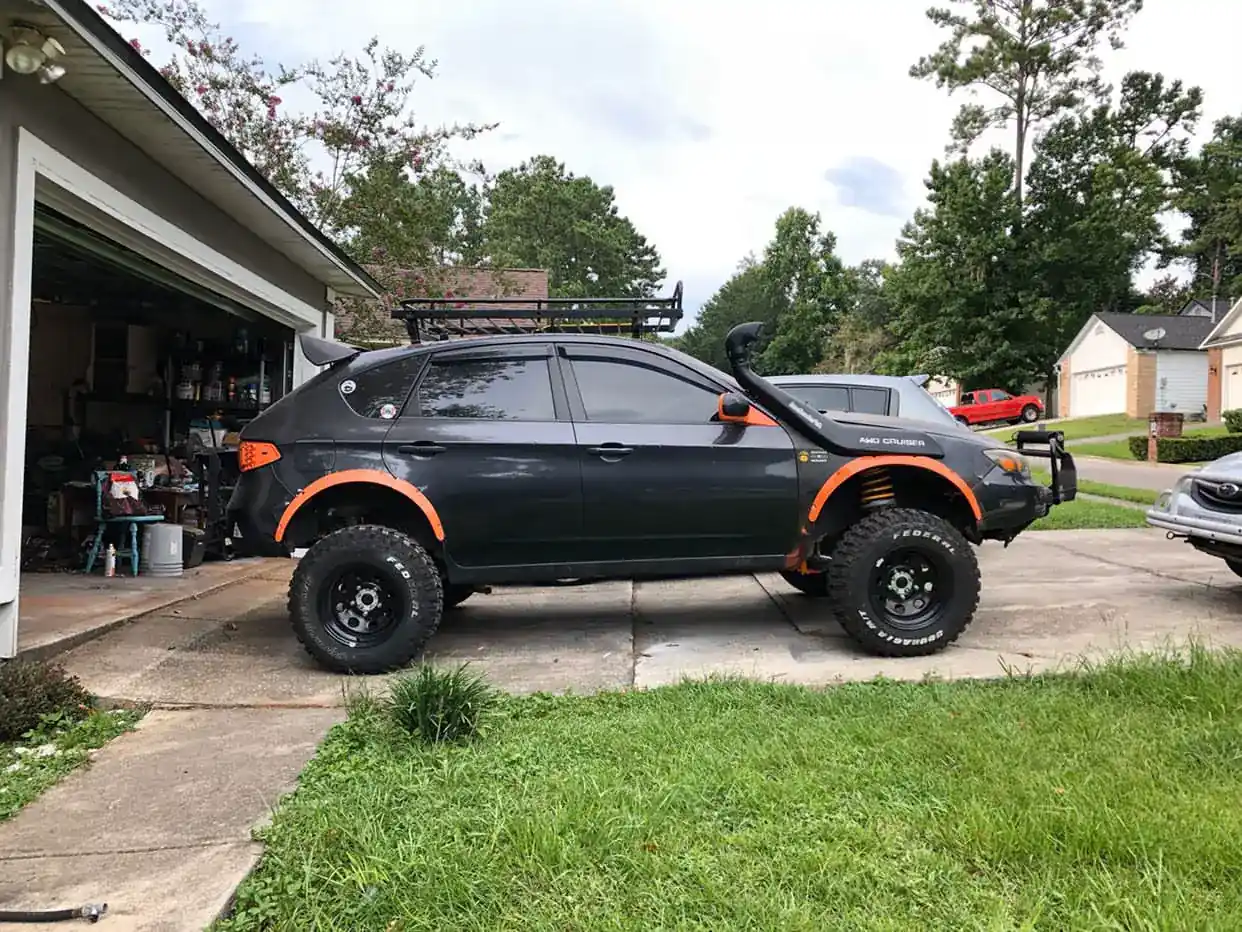
What's The Best Bang For The Buck?
For most Subaru off-road builds, a 1.5-2.5 inch lift is the sweet spot (this will depend on which model you own.) This gives you enough room to clear slightly larger tires (typically around 28-29 inches) without the need for excessive subframe modifications. With this setup, you maintain good handling, avoid major mechanical headaches, and still improve off-road capability.
Instead of installing a larger lift kit, I opted for investing in these items for more off-road capability:
Skid Plates – Protect your oil pan and other undercarriage components.
All-Terrain Tires – The right tires make a bigger difference than lift height. For those doing extreme off-road trails, a mud-terrain tire may be the best option.
Rear Diff Breather Mod – Helps prevent water ingress in deep crossings. An ECU relocation is another simple mod that can help you avoid catastrophic damage in the event of a severe water crossing.
Locking Diffs or LSD Swap – A better investment than an extreme lift for real traction gains. I started with an LSD but then decided to go with a Torq Masters rear locker.
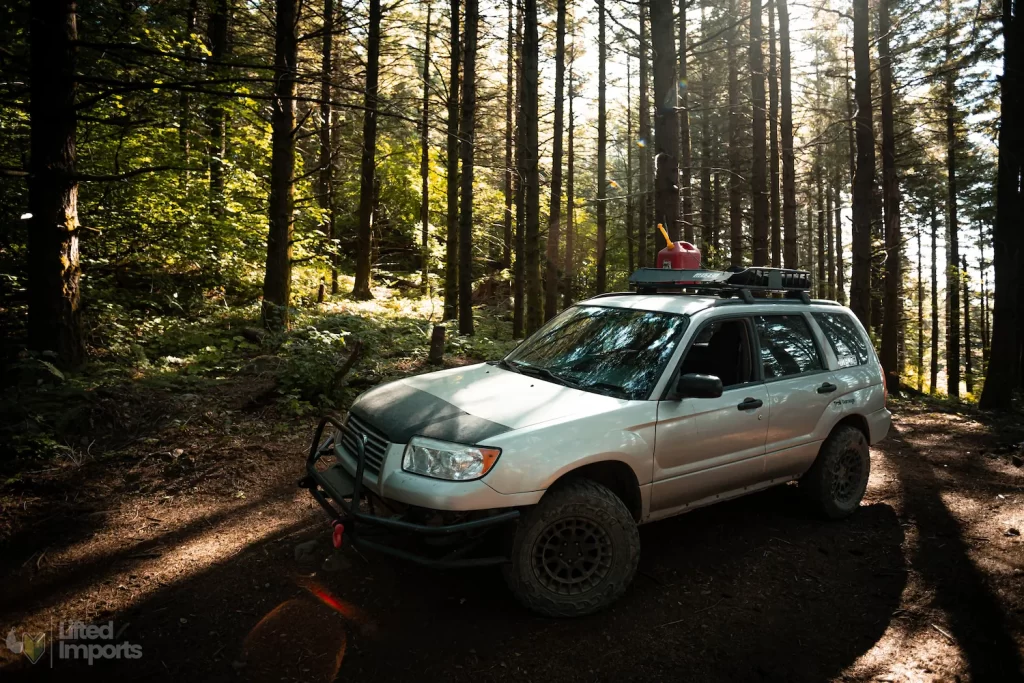
At the end of the day, it all comes down to what you want out of your build. If you just love the look of a massive lift, I say go for it! But if you’re after real capability, a moderate lift with functional mods will get you much further off-road.
If you want to do more extreme off-roading, adding a “real” 4×4 to your garage might be the way to go. That’s what I did and it’s allowed me to extend the life of my Subaru without beating on it just to make it through basic off-road trails. However, every person has to make that decision for themselves.

